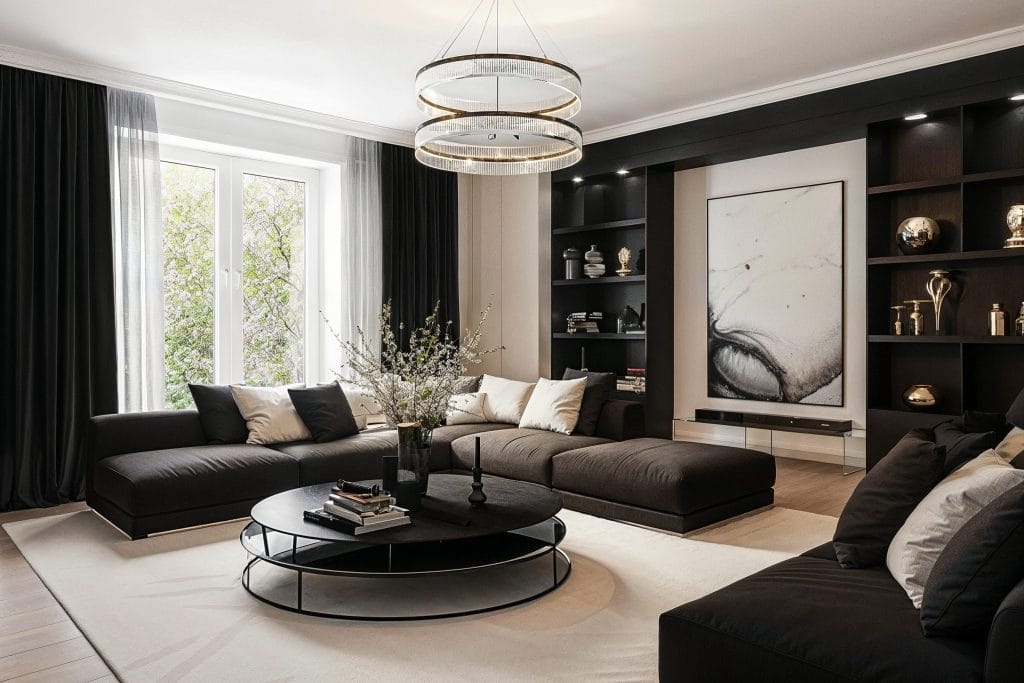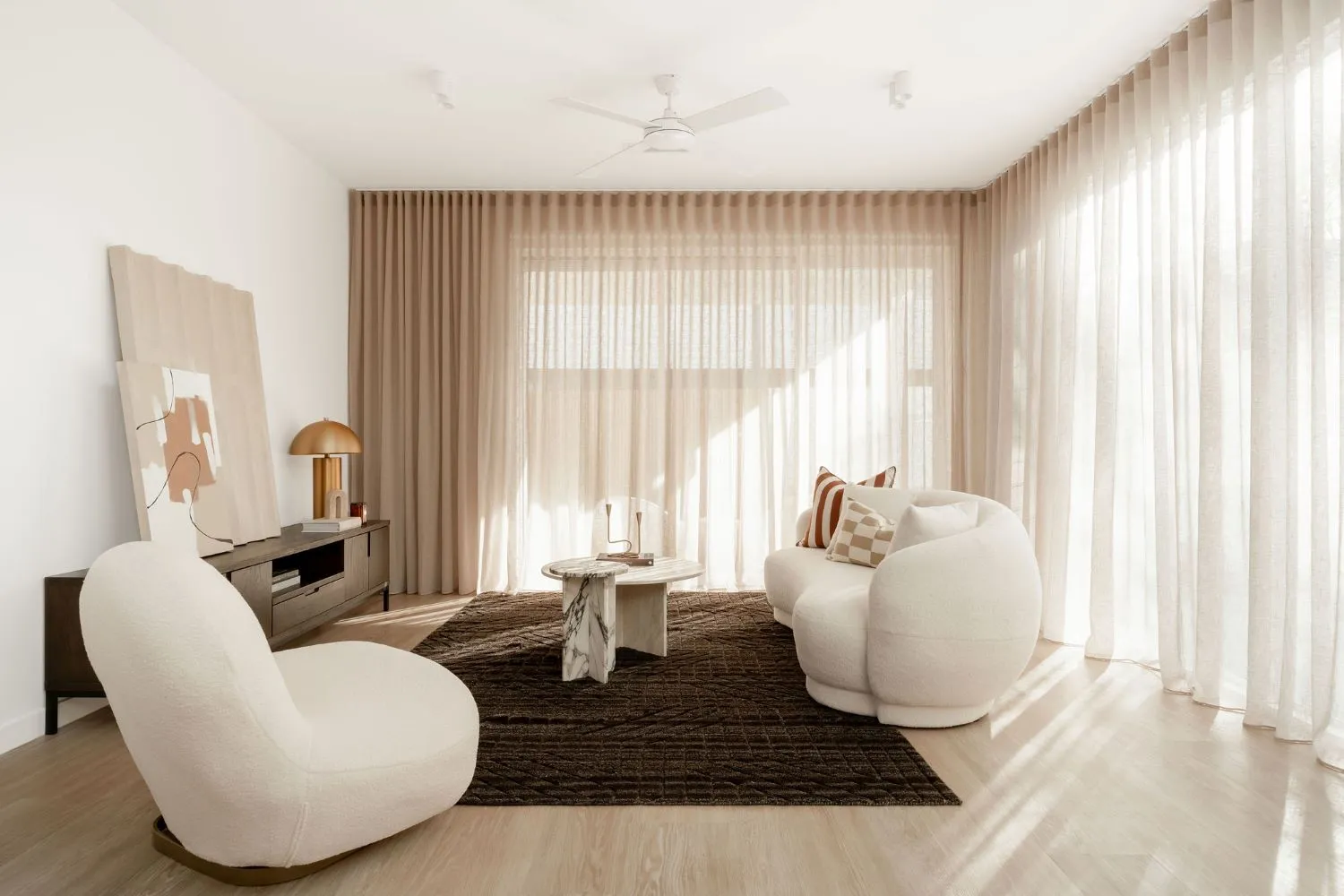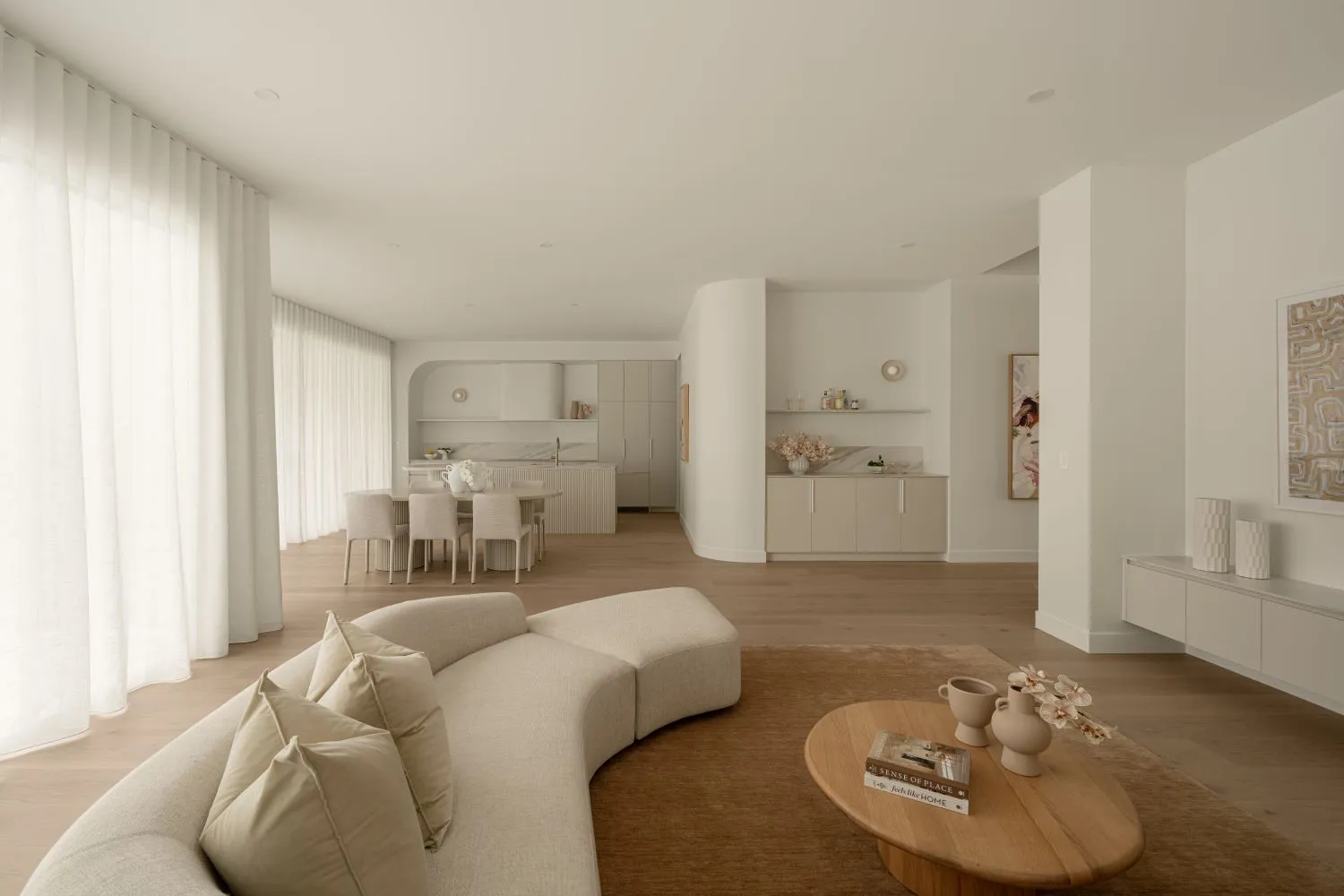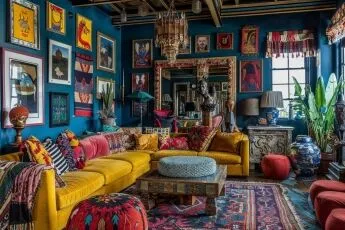News
The Ultimate Guide to Choosing the Perfect Living Room Furniture: Comfort, Style, and Functionality Combined
Part 1: Why the Living Room Matters and How Furniture Shapes It
The living room is often considered the beating heart of a home. It is the space where families gather to relax after a long day, where friends are welcomed and entertained, and where first impressions are made when someone steps inside your home. Unlike bedrooms or kitchens, which are primarily functional, the living room serves a much broader purpose: it is both functional and symbolic. It reflects your personality, your lifestyle, and even your values. That is why the furniture you choose for your living room is more than just décor—it shapes the way the space is used, the way it feels, and the way it represents you.
In this first part of our ultimate guide, we will explore the importance of the living room and dive into how carefully chosen furniture plays a critical role in shaping its character. We will also look at the key factors to consider before making purchasing decisions, ensuring that your living room doesn’t just look good but also feels right.
1. The Living Room as the Center of the Home
Every home has spaces that serve specific functions: kitchens are for cooking, bedrooms for resting, and bathrooms for refreshing. But the living room is different—it’s multifunctional, adaptable, and versatile. It is often the most “public” part of the house, the space where people gather, converse, and connect.
When you think about memorable evenings with friends, cozy Sunday afternoons with family, or even moments of solitude spent reading a book, chances are those moments take place in the living room. Its importance cannot be overstated. The living room often sets the tone for the entire home because it is the most visible and frequently used communal space.
Furniture plays a starring role in how the living room fulfills this central role. A comfortable sofa invites conversation, a well-placed coffee table encourages shared activities, and the arrangement of seating can either promote intimacy or create distance. Simply put, furniture design and placement directly influence how people experience your home.
2. Furniture as a Reflection of Personality and Lifestyle
Interior design experts often say that the living room is a mirror of its owner’s personality. Are you someone who prefers clean lines and a minimalist aesthetic? Your furniture choices—like a sleek sectional sofa in neutral tones paired with a glass coffee table—will express that. Do you love eclectic, vibrant environments? Then your living room might showcase colorful armchairs, patterned rugs, and unique accent pieces.
Furniture is not just about function; it is about storytelling. Each piece adds to the narrative of your home. A vintage bookshelf could hint at your love of history and literature, while a modern recliner might show that you value comfort above all else. Guests who enter your living room immediately learn something about who you are, simply by looking around.
Moreover, lifestyle plays a crucial role. A young family with children might prioritize stain-resistant fabrics and storage-friendly furniture. Professionals who host clients at home may invest in elegant, sophisticated pieces. Someone who frequently entertains large groups will likely prefer modular furniture that can adapt to gatherings.
Your living room furniture isn’t just furniture—it’s a lifestyle choice translated into design.
3. The Role of Comfort and Functionality
While style is important, comfort is non-negotiable. Imagine walking into a beautifully decorated living room with a stunning sofa, only to find that sitting on it feels like balancing on a wooden bench. Looks alone won’t make a space livable. Comfort is what transforms a room from a showcase into a sanctuary.
The right furniture balances comfort and function. For example, a sectional sofa offers generous seating for family and guests, while reclining options provide relaxation for movie nights. Coffee tables with storage compartments make it easy to declutter, while ottomans double as both footrests and extra seating.
Furniture must also adapt to your daily activities. Do you often work from home? A comfortable armchair near a window could become your reading or working nook. Do you love hosting game nights? A sturdy, spacious coffee table becomes the anchor for fun evenings. Functionality ensures that your living room serves your lifestyle rather than forcing you to adapt to its limitations.
4. How Furniture Defines Space and Flow
The layout of a living room largely depends on its furniture. Even in a small apartment, clever placement of a sofa, chairs, and tables can create distinct “zones” within the space. For instance, one corner can be dedicated to relaxation and reading, while another might serve as a conversation hub.
Furniture arrangement also dictates flow—how people move through the room. A poorly placed sectional might block the entrance, making the space feel cramped, while a well-arranged set of armchairs can make a large room feel inviting and cozy.
The concept of “space planning” is vital. A living room with balanced proportions, clear walking paths, and properly scaled furniture creates harmony. Oversized furniture in a small room overwhelms the space, while furniture that’s too small for a large room makes it feel empty. Achieving the right scale and proportion is one of the most important aspects of furnishing a living room.
5. The Emotional Impact of Living Room Furniture
Furniture is not just physical—it has an emotional dimension. Think about the feeling of sinking into a plush sofa after a long day, or the joy of gathering around a coffee table for laughter-filled evenings with friends. The furniture you choose directly affects the atmosphere of your home.
Colors, textures, and materials all play into this emotional impact. Soft fabrics in warm tones create coziness, while leather and metal finishes can evoke sophistication and modernity. Wooden furniture often adds warmth and natural charm. The right combination of these elements can create a living room that feels inviting, calming, or energizing—depending on the mood you want to set.
This emotional resonance is why investing in quality furniture pays off. It doesn’t just look good—it makes you feel good.
6. Factors to Consider Before Buying Living Room Furniture
Before you step into a showroom or browse online catalogs, it’s important to clarify your priorities. Here are the key considerations:
Room Size and Layout: Always measure your living room before purchasing furniture. Knowing the exact dimensions prevents costly mistakes, such as buying a sofa that won’t fit through the doorway or a coffee table that leaves no room to walk around.
Lifestyle Needs: Think about how you use your living room daily. Do you need kid-friendly fabrics? Pet-resistant materials? Extra storage?
Budget: A beautiful living room doesn’t have to break the bank. Setting a realistic budget helps you prioritize quality where it matters most—like a durable sofa—while saving on accessories that can be replaced more often.
Style Preferences: Decide whether you want a modern, traditional, or eclectic look. This helps narrow down choices and ensures all pieces complement each other.
Durability and Quality: Living room furniture is an investment. Opt for pieces that will last, not just in style but also in construction. Solid wood frames, high-quality upholstery, and sturdy finishes ensure longevity.
7. The Balance Between Trends and Timelessness
It’s tempting to jump on the latest design trend—whether it’s a specific color palette, a bold sofa design, or a minimalist Scandinavian vibe. However, living room furniture is not something you replace every year. The challenge lies in balancing trendy accents with timeless staples.
For example, investing in a neutral sofa ensures long-term adaptability, while accent pillows, rugs, or side chairs can reflect current trends and be swapped out easily. This way, your living room evolves with your tastes without requiring a complete overhaul.

8. Living Room Furniture as a Long-Term Investment
Finally, it’s worth remembering that furniture is not just an expense—it’s an investment in your lifestyle and well-being. A high-quality sofa may cost more upfront, but its durability and comfort can save you money in the long run compared to replacing a cheaper piece every few years.
Moreover, well-chosen furniture increases the value of your home’s aesthetic appeal. Whether you plan to entertain guests frequently or simply want to create a haven for your family, thoughtful investment in living room furniture pays dividends for years to come.
Conclusion of Part 1
The living room is far more than just a room with chairs and a sofa—it is the core of your home’s identity. Furniture defines how it functions, how it looks, and how it feels. From creating comfort and shaping flow to reflecting your personality and lifestyle, furniture decisions carry long-term weight.
As you embark on the journey of choosing the perfect living room furniture, remember that every choice matters. The sofa you sit on, the table you gather around, and the accents you display all weave together into a story—your story. And in that story, the living room is the opening chapter, setting the tone for the rest of the home.
Part 2: Key Furniture Pieces Every Living Room Needs
When it comes to designing a living room that feels complete, harmonious, and inviting, there are certain furniture pieces that almost every space requires. While individual styles, room sizes, and personal preferences vary widely, these essential items form the foundation of a functional and stylish living room. Think of them as the building blocks—you can mix, match, and layer additional elements on top, but without these core pieces, the room often feels unfinished.
In this section, we will dive deep into the most important living room furniture pieces, examining not only their practical functions but also their aesthetic roles. From the mighty sofa that dominates the space to accent chairs, coffee tables, storage solutions, and finishing touches like lighting and rugs, every piece has a role to play.
1. The Sofa: The Undisputed Centerpiece
If the living room is the heart of the home, then the sofa is undoubtedly the soul of the living room. It’s the piece that dominates both visually and functionally. Whether you’re lounging with family, hosting friends, or simply watching TV, the sofa takes center stage.
Types of Sofas
Sectional Sofas: Perfect for large families or those who love to entertain. Sectionals maximize seating and can be configured to fit your room’s layout.
Loveseats: Ideal for small apartments or as a complement to larger sofas. These compact pieces seat two comfortably.
Sleeper Sofas: Great for homes that need to double up living rooms as guest spaces. With a pull-out bed, they provide functionality without sacrificing style.
Classic Three-Seater Sofas: The most common choice, versatile enough for almost any living room.
Materials and Fabrics
Leather: Sleek, durable, and sophisticated, though it requires maintenance to avoid cracks.
Fabric: Offers a wide variety of textures, patterns, and colors. Options like microfiber are durable and easy to clean.
Performance Fabrics: Engineered to resist stains and wear, perfect for households with kids or pets.
Key Considerations
Comfort is paramount, so always sit on the sofa before buying if possible. Look at seat depth, cushion firmness, and back support. A sofa that looks stunning but doesn’t invite you to sink in will end up unused.
2. Accent Chairs: Style and Versatility
While sofas provide the main seating, accent chairs complete the arrangement. They add visual interest, create balance, and offer flexible seating options.
Popular Styles
Wingback Chairs: With high backs and flared sides, these are traditional and commanding.
Club Chairs: Wide and deep, designed for comfort.
Barrel Chairs: Rounded backs provide a cozy, enveloping feel.
Armless Slipper Chairs: Sleek and modern, they work well in smaller rooms.
Accent chairs also allow homeowners to experiment with bold colors, patterns, or textures without overwhelming the space. For example, a vibrant velvet chair can stand out beautifully against a neutral sofa.
3. Coffee Tables: The Functional Anchor
The coffee table is often underestimated, but it serves as the anchor of the living room layout. It sits at the center of the seating area, tying the pieces together while providing crucial functionality.
Key Functions
Holding drinks, snacks, or books during conversations and gatherings.
Serving as a decorative platform for trays, candles, or floral arrangements.
Providing storage in models with drawers or shelves.
Styles and Shapes
Rectangular and Oval: Classic and versatile, especially in larger living rooms.
Square: Works well with sectional sofas.
Round: Great for small spaces and for families with children since there are no sharp edges.
Lift-Top Coffee Tables: Modern designs that double as workstations or dining surfaces.
When choosing a coffee table, scale is critical. It should be proportional to your sofa and leave enough room for movement around it.
4. Side Tables and Consoles: Supporting Roles
Side tables may not be the star of the show, but they play an essential supporting role. Positioned next to sofas or chairs, they provide a surface for lamps, drinks, or personal items like phones and books.
Console tables, often placed against a wall or behind a sofa, add further versatility. They can hold décor, lighting, or serve as a stylish entry point if your living room flows directly into the front door.
These smaller tables are excellent opportunities to add style without overwhelming the room. Metallic finishes, marble tops, or wooden textures can elevate the design.
5. TV Stands and Media Units
In most modern living rooms, the television is still a focal point. The right TV stand or media console not only houses the television but also provides storage for electronics, game consoles, and accessories.
Design Considerations
Open Shelving: Creates a modern, airy look but requires neat organization.
Closed Cabinets: Ideal for hiding clutter and keeping things minimalist.
Wall-Mounted Units: Perfect for small spaces, freeing up floor space and creating a sleek look.
Size matters here. The TV stand should be proportional to the television, ideally wider to create balance.
6. Storage Solutions: Keeping Clutter at Bay
A clutter-free living room feels larger, calmer, and more inviting. Incorporating storage into your furniture ensures that everything has its place.
Options include:
Storage Ottomans: Provide hidden space for blankets, toys, or magazines.
Built-In Shelves: Perfect for displaying books and decorative items.
Cabinets or Credenzas: Elegant and functional, ideal for larger living rooms.
Floating Shelves: Great for maximizing vertical space in smaller homes.
Storage furniture should balance utility with aesthetics—it’s not just about hiding items but also enhancing the room’s look.
7. Extra Seating: Poufs, Benches, and Stools
For homes that often entertain guests, extra seating is a lifesaver. Poufs and stools are lightweight and easy to move around, while benches can serve double duty as seating and storage.
These versatile pieces can be tucked away when not in use, making them especially useful for smaller spaces.
8. Lighting: Setting the Mood
While technically not furniture, lighting fixtures are essential components of a living room setup. Without proper lighting, even the most beautifully furnished space can feel dull or incomplete.
Types of Lighting
Overhead Lighting: Chandeliers, pendant lights, or recessed lighting.
Task Lighting: Floor or table lamps for reading and focused activities.
Accent Lighting: Wall sconces or LED strips that highlight art or architectural features.
Lighting not only ensures visibility but also sets the mood—soft lighting creates intimacy, while bright lighting energizes the space.

9. Rugs: Defining the Space
Rugs might seem like an accessory, but they’re essential for grounding a living room. They define the seating area, add texture and color, and create warmth underfoot.
Key Tips
Choose the right size: The rug should be large enough for at least the front legs of all seating to rest on it.
Consider material: Wool rugs are durable and cozy, while synthetic fibers are easier to clean.
Patterns and colors: Rugs are a great way to introduce personality, whether through bold patterns or subtle neutrals.
10. Decorative Accents: The Finishing Touches
Once the main furniture pieces are in place, decorative accents tie everything together. Throw pillows, blankets, artwork, and plants bring personality and warmth.
The key here is moderation. Too many accessories can make the room feel cluttered, while too few can make it seem cold or unfinished. Striking the right balance ensures the space feels lived-in yet elegant.
11. Choosing Furniture for Different Living Room Sizes
Not all living rooms are created equal, and your furniture needs to reflect the size and layout of your space.
Small Living Rooms: Prioritize multifunctional furniture, like sleeper sofas or storage ottomans. Opt for lighter colors and slim silhouettes to create an airy feel.
Large Living Rooms: Embrace sectional sofas, multiple seating areas, and larger coffee tables. Oversized furniture works better here, preventing the space from feeling empty.
Open-Concept Spaces: Use rugs and furniture placement to define distinct zones within the larger area.
12. Cohesion and Balance: Bringing It All Together
Having the right furniture pieces is only half the battle; they need to work together harmoniously. Cohesion is achieved when colors, styles, and proportions complement each other. Balance ensures that no single piece overwhelms the space.
For example, pairing a large sectional sofa with a delicate coffee table might look awkward, but combining it with a sturdy rectangular table creates harmony. Similarly, a bold accent chair can be balanced with neutral tones elsewhere in the room.
Conclusion of Part 2
The living room is like a puzzle, and each furniture piece is a vital piece of that puzzle. From the sofa that anchors the space to the coffee table that facilitates daily activities, from storage solutions that keep clutter at bay to accent chairs that inject personality, every item contributes to the room’s overall look and functionality.
Choosing the right pieces doesn’t mean filling your room with as much furniture as possible. Instead, it’s about thoughtful selection, ensuring that each piece has a purpose and contributes to both form and function.
With these essentials in place, you’ll have a living room that is not only beautiful but also practical, welcoming, and reflective of your unique style.
Part 3: Tips for Creating a Cohesive, Stylish, and Functional Living Room
Designing a living room doesn’t stop at picking the right sofa or coffee table. The true magic lies in how everything comes together—the balance of colors, the arrangement of furniture, the play of light, and the finishing details that transform a room from ordinary to extraordinary. A cohesive living room feels intentional, stylish, and welcoming, while still serving the practical needs of everyday life.
Here are the most effective tips to achieve a space that blends beauty with function.
1. Start with a Clear Vision
Before buying anything, define the atmosphere you want to create. Do you envision a modern, minimalist retreat? A cozy, farmhouse-inspired hub? Or perhaps a luxurious, hotel-like lounge? Having a vision keeps you focused, prevents random purchases, and ensures all pieces work together.
Create a mood board with colors, textures, and furniture styles. Even collecting images from Pinterest or interior design magazines can help clarify your preferences.
2. Choose a Color Palette and Stick to It
Colors set the tone of a room. A consistent palette creates harmony, while too many mismatched shades can make the space feel chaotic.
Neutrals (whites, grays, beiges): Timeless, versatile, and calming.
Warm tones (browns, oranges, yellows): Cozy and inviting.
Cool tones (blues, greens): Relaxing and refreshing.
Bold accents: A pop of mustard, navy, or emerald can bring energy without overwhelming the room.
Use the 60-30-10 rule: 60% dominant color (walls, large furniture), 30% secondary color (curtains, rugs, smaller furniture), and 10% accent (pillows, art, accessories).
3. Prioritize Layout and Flow
Even the most beautiful furniture loses its charm if the layout is awkward. The living room should encourage easy movement and natural conversation.
Create a focal point: This could be a fireplace, a TV, or a large piece of art. Arrange furniture around it.
Mind the spacing: Leave at least 18 inches between the sofa and coffee table for comfort.
Avoid blocked pathways: Don’t place large furniture in a way that interrupts walking routes.
Think of your layout as a story—you want guests to feel guided smoothly from one area to the next.
4. Mix Textures for Depth and Interest
A living room that relies only on one material—like all leather, or all wood—can feel flat. Mixing textures creates depth and visual richness.
Pair a soft fabric sofa with a glass coffee table.
Layer a wool rug under a sleek leather chair.
Add cozy elements like knitted throws or velvet cushions.
Texture is what makes a room feel “touchable” and lived-in.
5. Balance Proportions
Proportion is the unsung hero of interior design. Oversized furniture in a small room feels suffocating, while dainty pieces in a large space feel lost.
For small rooms: Choose low-profile sofas, armless chairs, and glass tables to create openness.
For large rooms: Go bold with sectional sofas, tall bookshelves, and large rugs to ground the space.
Balance also applies to décor. If one side of the room feels heavy (like a large sofa), balance it with a tall lamp or piece of art on the opposite side.
6. Layer Your Lighting
Lighting shapes mood. Instead of relying on one overhead fixture, layer your lighting to suit different occasions.
Ambient lighting: General brightness (ceiling lights, recessed lighting).
Task lighting: Focused illumination (floor lamps for reading, table lamps for working).
Accent lighting: Adds drama and highlights (wall sconces, LED strips under shelves).
Dimmer switches are excellent additions, allowing you to adjust brightness depending on the activity—bright for gatherings, soft for movie nights.

7. Don’t Forget Personal Touches
What makes a living room feel truly yours are the personal details. Family photos, travel souvenirs, artwork you love, or even handmade crafts can add character. Without them, a room risks feeling like a showroom.
The key is moderation—curate, don’t clutter. A few meaningful items displayed thoughtfully can say more about your personality than dozens of random trinkets.
8. Incorporate Nature
Plants breathe life into a living room. They purify air, add a touch of green, and create a calming effect. Even a single statement plant, like a fiddle-leaf fig, can elevate the atmosphere.
If you lack a green thumb, opt for low-maintenance varieties like succulents, snake plants, or pothos.
9. Use Rugs to Define Zones
In open-concept homes, rugs are invaluable for defining areas. A large rug can anchor the seating space, while a smaller one might highlight a reading nook.
Ensure the rug size complements the furniture: ideally, at least the front legs of all major seating pieces should rest on the rug.
10. Edit and Simplify
Sometimes, less is more. A cluttered living room feels stressful, while a carefully edited one feels intentional. Periodically step back and ask yourself: Do I really need this piece? Does it add value or beauty?
Editing ensures your living room stays stylish without being overcrowded.
Conclusion of Part 3
Creating a cohesive, stylish, and functional living room is less about following strict design rules and more about understanding balance, flow, and personal expression. Start with a vision, build around essential furniture, and use colors, textures, and lighting to craft atmosphere. Add personal details that reflect your story, and never underestimate the power of editing to keep the space fresh.
A well-designed living room should feel like an extension of you—welcoming, comfortable, and uniquely beautiful. With these tips, you’ll be able to create a space that not only impresses guests but also nurtures you and your loved ones every single day.

